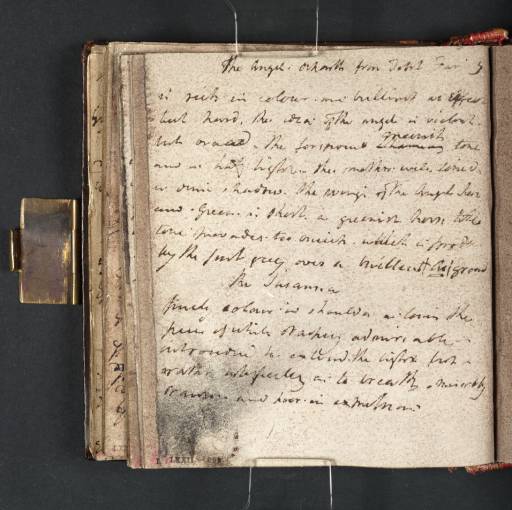Finberg correctly identified the subject of Turner’s first remarks as ‘“L’Ange Raphaël quittant Tobie”’ by Rembrandt and that of the second passage as ‘Perhaps the “Susanna”, now at the Hague’. The Louvre
Tobias and the Angel dates from 1637 and is an autograph work, from the collection of Louis XV. The latter picture,
Susanna Bathing (Mauritshuis, The Hague) is no longer given to Rembrandt himself. See folio 61 of this sketchbook (
D04355) for the picture and Turner’s copy, and also notes on folio 59 verso (
D04352) for Kitson’s opinion that Turner’s observations on
Tobias and the Angel were more extensive and sympathetic than they were of the
Susanna and
The Good Samaritan, another picture then ascribed to Rembrandt in the Louvre but now rejected. Gage provides further evidence of Turner’s admiration of the Louvre
Tobias and the Angel, and of his wider knowledge of Old Master painting, observing that Turner used this figure for ‘one of the most brilliantly realised’ of the angels in his unfinished picture
The Vision of Jacob’s Ladder (Tate
N05507).
1 There it is introduced into a turbulent setting based on Salvator Rosa’s
Jacob’s Dream (Devonshire collection, Chatsworth), which Turner may have seen at Chatsworth in 1830 but doubtless already knew from a print as well as from Joshua Reynolds’s description in his fourteenth Discourse. Dating
Jacob’s Ladder about 1830, Butlin and Joll note that it may show evidence of work over a considerable period. The appearance of Rembrandt’s angel could indicate that this began shortly after the Louvre visit. No drawing of the figure has been traced, so Turner’s memory would need to have been fresh.

